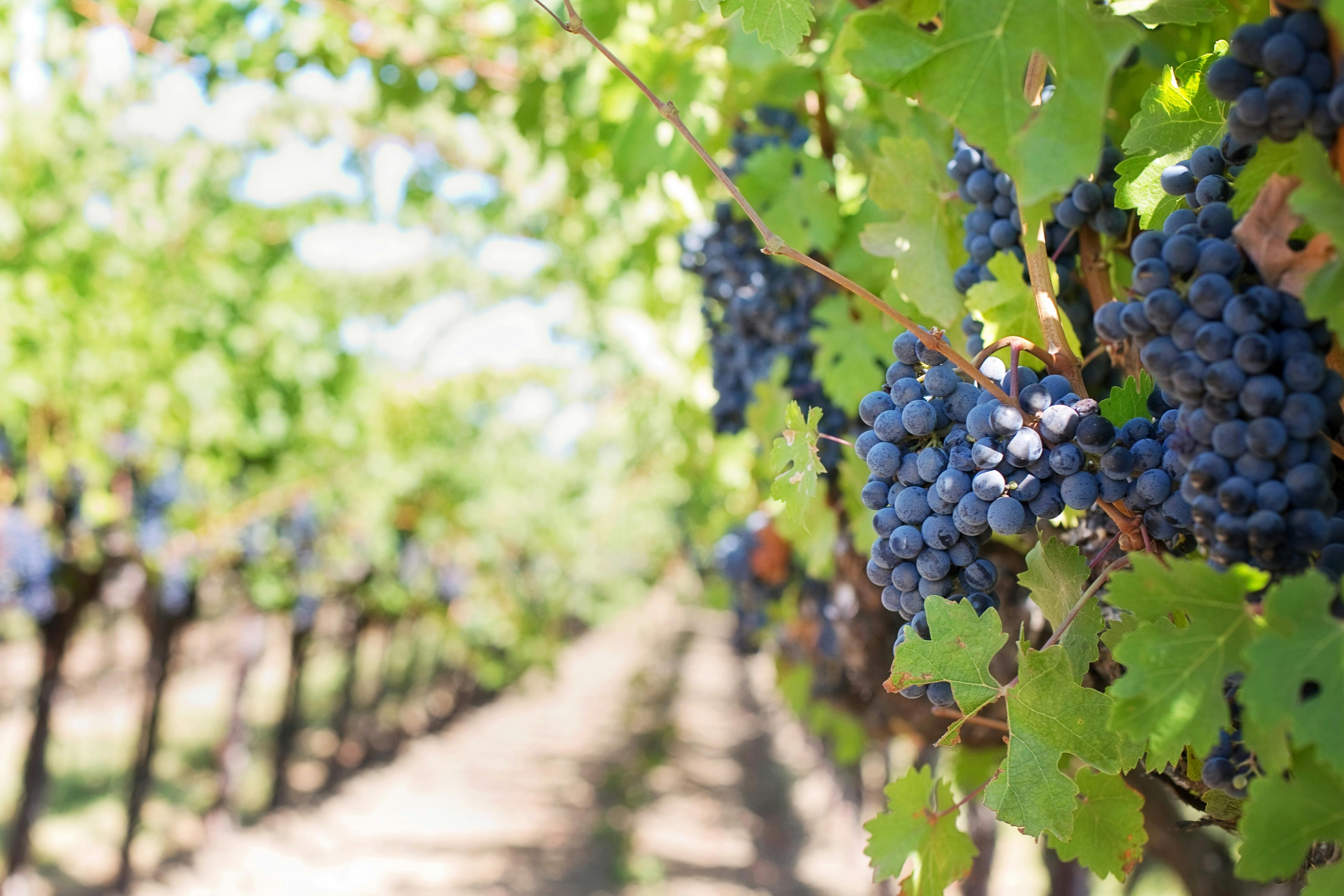When it comes to the world of wines, there is a subtle yet fascinating distinction that separates two key players: Old World and New World wines. While both may boast about their rich flavors and exquisite taste, the difference lies in the story they tell. Old World wines, hailing from Europe, whisper tales of ancient winemaking traditions and centuries of expertise. On the other hand, New World wines, derived from regions like the Americas, Australia, and New Zealand, are bold and vibrant, embracing innovation and expressing the unique characteristics of their terroir. So, whether you find yourself savoring a delicate French Pinot Noir or indulging in a robust Californian Cabernet Sauvignon, it’s all about discovering the contrasting tales each glass has to offer.

Geographical Origin
Old World Wines
Old World wines refer to wines that are produced in countries with a long history of winemaking, primarily in Europe. These countries include France, Italy, Spain, Germany, Portugal, Greece, and others. The geographical origin of Old World wines plays a significant role in their unique flavors and characteristics. The vineyards in these regions typically have cooler climates, varied soil types, and different elevations, all of which contribute to the nuances in the taste and quality of the wines.
New World Wines
On the other hand, New World wines are produced in countries outside of Europe, primarily in regions such as the United States, Australia, New Zealand, South Africa, Chile, and Argentina. These are countries that have a more recent history of winemaking compared to their Old World counterparts. New World wines have gained popularity in recent years due to their forward-thinking approaches, innovation, and the use of modern winemaking techniques.
Historical Background
Old World Wines
The historical background of Old World wines dates back centuries. These regions have rich winemaking traditions that have been passed down through generations. The ancient Romans and Greeks were among the first to cultivate vineyards and produce wines in Europe. Over time, monasteries played a significant role in preserving winemaking knowledge and techniques, leading to the establishment of prestigious wine regions, such as Bordeaux in France and Tuscany in Italy.
New World Wines
The history of New World wines is relatively new compared to the Old World. It wasn’t until the 18th century, when European settlers began to migrate to regions such as North and South America, Australia, and New Zealand, that winemaking began in these areas. These settlers brought vine cuttings and winemaking knowledge with them, establishing the foundations for the modern wine industries in these regions.
Traditional Winemaking Techniques
Old World Wines
Old World winemaking techniques are deeply rooted in tradition and have been refined over centuries. The focus is often on preserving the natural characteristics of the grape varietals and the terroir. Techniques like hand-harvesting, foot-treading of grapes, and fermentation in large oak barrels are commonly used. The emphasis is on producing wines that reflect the specific region and vintage, showcasing the subtleties and nuances of the grapes and terroir.
New World Wines
New World winemaking techniques often incorporate modern technologies and innovations. While traditional methods are not entirely disregarded, the approach is more flexible and experimental. Techniques such as mechanical harvesting, temperature-controlled fermentation, and the use of stainless steel tanks are common. The focus is on consistency, fruit-forward flavors, and accessibility.
Climate and Terroir
Old World Wines
Old World wines are heavily influenced by their unique climates and terroir. The cooler climates, combined with specific soil compositions, create a delicate balance that impacts the grapes’ ripening process and flavor profiles of the wines. For example, the cool climate of Burgundy in France is ideal for growing Chardonnay and Pinot Noir grapes, producing wines with finesse and elegance. The terroir, including factors such as altitude, humidity, and sun exposure, further contributes to the distinctive characteristics of Old World wines.
New World Wines
New World wines are produced in diverse climates and terroirs. From the hot and arid regions of California to the cool and maritime-influenced vineyards of New Zealand, these regions offer a wide range of microclimates suitable for growing a variety of grape varietals. New World wines often exhibit riper fruit flavors, higher alcohol content, and a more pronounced expression of the grape varietal due to the warmer climates and the use of modern viticultural techniques.

Grape Varieties and Wine Styles
Old World Wines
Old World wines are intrinsically linked to specific grape varieties that have historically been cultivated in each region. For example, in Bordeaux, Cabernet Sauvignon, Merlot, and Cabernet Franc are the primary grape varieties used for red wines, while Sauvignon Blanc and Semillon dominate the white wine production. Each region has its signature grape varieties and specific regulations on blending and aging, creating unique wine styles that are deeply rooted in tradition and heritage.
New World Wines
New World wines offer a broader range of grape varieties and more experimentation with winemaking styles. While popular international varieties such as Cabernet Sauvignon, Chardonnay, and Sauvignon Blanc are widely grown, winemakers in New World regions often embrace lesser-known and indigenous grape varieties. This diversity allows for the development of unique wine styles and the exploration of different flavors and profiles.
Labeling Laws and Regulations
Old World Wines
Old World wines have strict labeling laws and regulations in place. These regulations focus on indicating the geographical origin, quality level, and specific winemaking practices. For example, in France, the Appellation d’Origine Contrôlée (AOC) system ensures that wines are labeled with the specific region of origin, such as Champagne or Chateauneuf-du-Pape. These regulations aim to protect the reputation and authenticity of Old World wines.
New World Wines
New World wine regions generally have fewer regulations on labeling compared to their Old World counterparts. However, many countries have classification systems in place to ensure transparency and quality in the market. For example, in the United States, the American Viticultural Area (AVA) designations help consumers identify the wine’s origin and overall quality. While these regulations may be less strict, New World winemakers often adopt voluntary labeling practices to provide additional information about the wine’s characteristics, such as flavor profiles or production methods.

Wine Culture and Traditions
Old World Wines
Old World wine regions have a deep-rooted wine culture and rich traditions. Wine is often an integral part of the local lifestyle, with winemaking techniques and knowledge passed down from generation to generation. Wine is frequently enjoyed alongside traditional cuisine, and the winemaking regions themselves often have historical landmarks and tourist attractions dedicated to wine. Wine festivals, cellar tours, and tastings are common, allowing visitors to immerse themselves in the local wine culture.
New World Wines
New World wine regions are known for their more relaxed and informal wine culture. Wine is often associated with casual enjoyment and socializing, rather than being deeply integrated into everyday life. Wine tourism is flourishing in New World regions, attracting visitors with modern tasting rooms, scenic vineyard landscapes, and immersive experiences. Wine events and festivals often focus on entertainment and education, making them accessible to wine enthusiasts of all levels.
Market Perception and Branding
Old World Wines
Old World wines are often perceived as having a sense of tradition, authenticity, and sophistication. The historical significance and reputation of these wine regions contribute to the perceived quality and prestige of the wines. Old World wineries often rely on long-established brands and vineyards to attract consumers who appreciate the heritage and craftsmanship associated with these wines.
New World Wines
New World wines are often seen as more innovative, approachable, and consumer-friendly. The modern branding and marketing strategies employed by New World wineries have helped create a perception of these wines as fresh, exciting, and value-driven. These regions often focus on branding and storytelling, highlighting the winemaker’s creativity and the unique attributes of the terroir to capture the attention of consumers.
Price and Accessibility
Old World Wines
Old World wines can vary widely in terms of price and accessibility. While some prestigious and aged wines from renowned regions can command high prices, there are also many affordable options available. The accessibility of Old World wines may vary depending on the specific region, as some wines may be limited in production or only available through specialized wine merchants. However, the sheer diversity of Old World wine regions ensures that there is a range of options to suit various budgets and preferences.
New World Wines
New World wines generally offer a wide range of price points and greater accessibility. The abundance of vineyard land and the use of modern viticultural practices often result in larger wine production quantities and more competitive pricing. New World wines are readily available in supermarkets, wine shops, and online platforms, making them easily accessible to a wide range of consumers.
Evolution and Innovation
Old World Wines
Old World wine regions have a long-standing tradition of winemaking, but they are not immune to evolution and innovation. While the focus remains on preserving traditions and heritage, there is also room for experimentation and adaptation. In recent years, Old World winemakers have embraced modern techniques and technologies to enhance quality and sustainability while still maintaining the region’s unique character and style.
New World Wines
New World wine regions have always embraced innovation and have been at the forefront of introducing new winemaking techniques and technologies. The focus on experimentation, combined with the freedom to explore uncharted territories, has led to the evolution of winemaking practices and the emergence of new wine styles. New World winemakers are continually pushing boundaries and challenging traditional norms, resulting in exciting and dynamic wines.
In conclusion, the difference between Old World and New World wines extends beyond just their geographical origins. Each has its unique historical background, winemaking techniques, climate and terroir, grape varieties, labeling laws, and cultural traditions. While Old World wines are steeped in tradition and offer a sense of heritage and sophistication, New World wines bring innovation, accessibility, and a fresh approach to winemaking. Both Old World and New World wines have their charm, and exploring the diverse and evolving world of wine is a delight for enthusiasts and novices alike.

Franco Deville, an esteemed wine connoisseur and author, is the visionary behind “Wines of Madeira.” His extensive background in viticulture and wine tasting enriches his detailed guide on Madeira wines. Franco’s dedication to traditional winemaking and innovative approaches has established him as an influential voice in the wine community.

